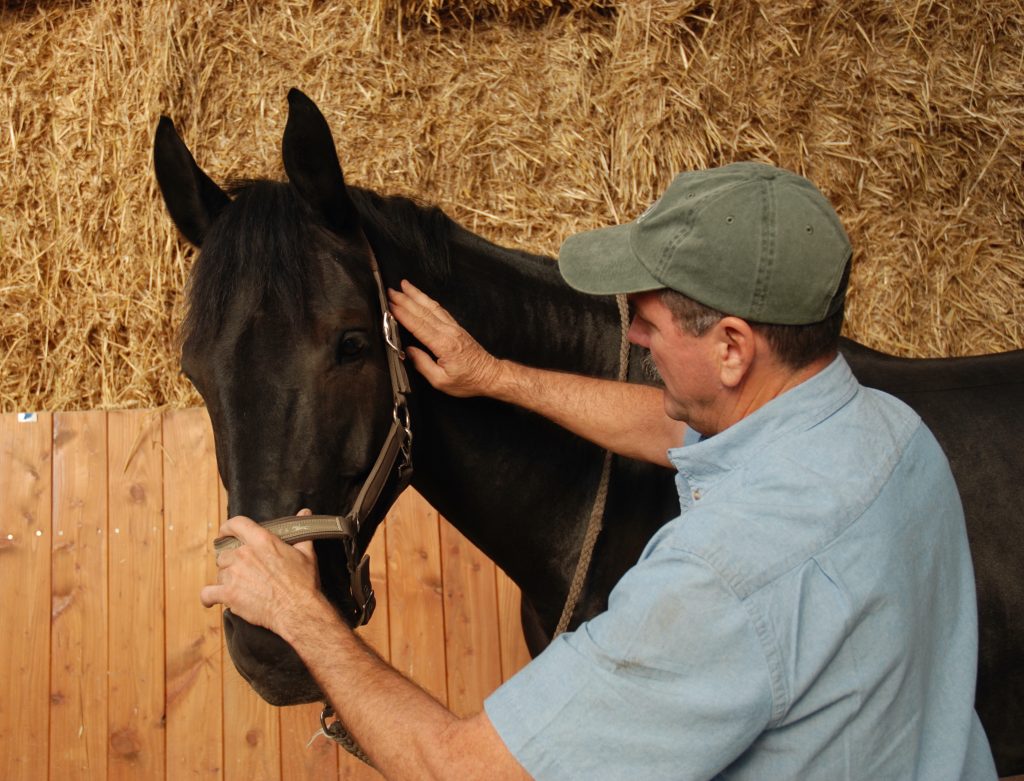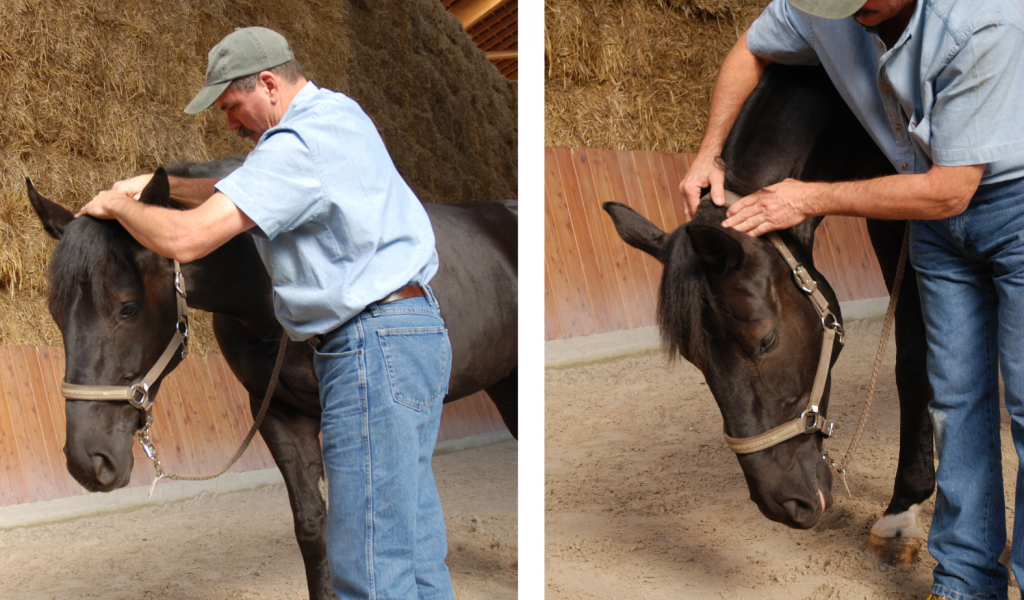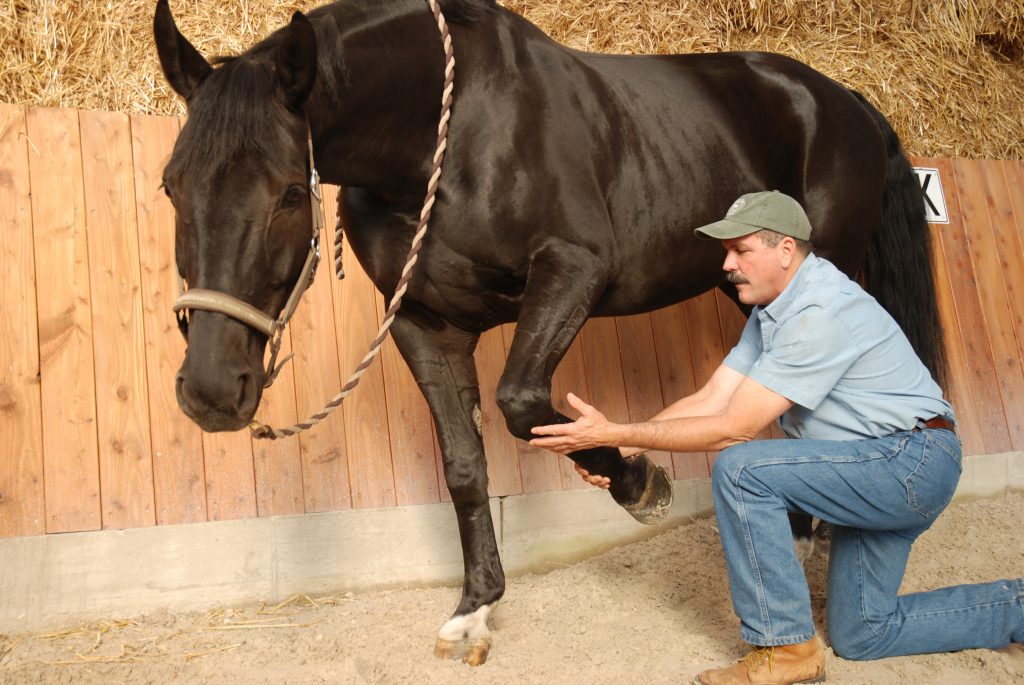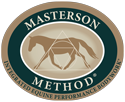
In Primary Issues of tension in the horse’s body, Part 1 and 2 we talked about performance or behavior issues and possible primary issues that might be behind them and discussed Masterson Method® techniques that may help with the (secondary) tension caused by them.
All of what we work on in the horse’s body is caused by something. It is secondary to or created by some other, primary issue. We can clear tension in the horse’s body but if we can determine what’s causing the tension and remedy it, then ideally the tension will likely not return. For this reason, we can help the horse even more.

Head-Shy – Possible Primary Issues
In my experience, 95% of head-shy horses are that way because of pain and tension in the poll and atlas.
There are many things that may be creating pain or tension in the poll and atlas. Sore front feet and dental issues are two of the most common issues that should be considered first. Back soreness can cause tension just behind the poll and on top of the atlas. I also believe that mental stress and tension can also develop into “headaches” in the horse. Some horses and breeds that are more high strung than others have trouble relaxing tension in the poll area once it has accumulated. If a horse is head-shy, it’s a 99% chance that he will need work so releasing tension in that area can be one of the most rewarding things you can do for the horse.
How to Address:
• Poll and Atlas releases
• Scapula and Under Scapula Releases
• Hind End Release Points
The Poll and Atlas Releases are the key to releasing tension and relieving pain but aren’t always the easiest things to do with a head-shy horse. It is important to keep the horse relaxed and to stay as light as possible when starting the bodywork. You may even want to start with air gap pressure or an “extended air gap” with as much as 4 to 5 inches away from the horses skin. Once the horse realizes that he is not being forced and that it feels good, it will be easier to work with him.

Another good alternative to start with is to do the Scapula Release first. This is generally easier for the horse if he is very head-shy. Even the smallest releases will often break the ice and get enough endorphins going to make the next steps a little easier.
If you can get the horse to relax through even a tiny bit of Lateral Cervical Flexion in the poll area, the horse will relax enough for you to do a little more, then a little more. Have patience, and from there you may be able to work gently up the neck toward the poll. Head Down Technique works directly on muscles, large and small, that attach to the poll, atlas and other vertebrae of the upper neck. Many of these muscles work to rise up, hold and turn the head and upper neck. You will also be working on muscles and ligaments that connect to the withers, sternum and foreleg.
An important part of the body is the “suspension bridge” that runs from the poll, over the top of the withers, down the top of the spinal column via the supraspinous ligament, to connect to the sacrum. The poll accumulates a great deal of stress and tension that the horse is unable to release on his own. In addition to mechanical stress that is exerted on muscles of the poll and atlas through movements of the head and neck, mental stress, like worry and fear, also greatly affects the poll and atlas. Pain anywhere in the body will also result in stress and tension in the poll and atlas. I have found that pain in the front feet and pain in the back can contribute greatly to tension in the poll and atlas.
Hopefully this three part series on Primary Issues that cause tension in horses has given you ideas and practical tips about how and where to work with your horse.
Learn about these techniques and much more in our Beyond Horse Massage Book.
